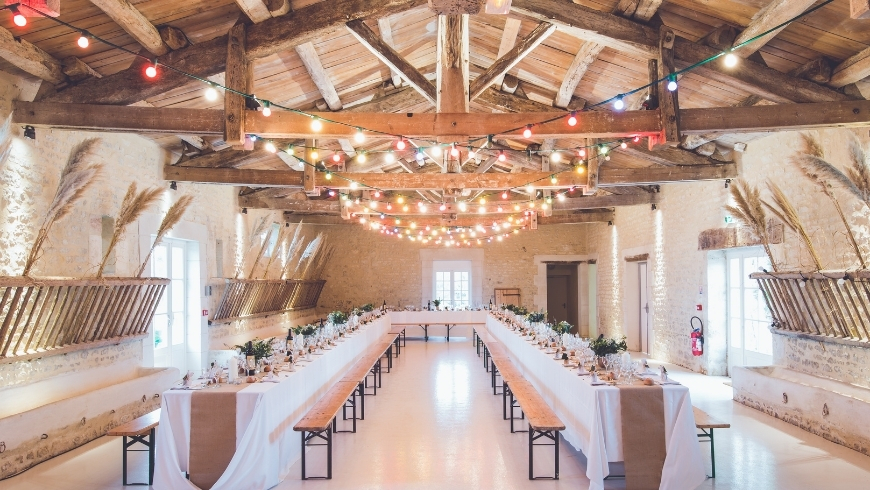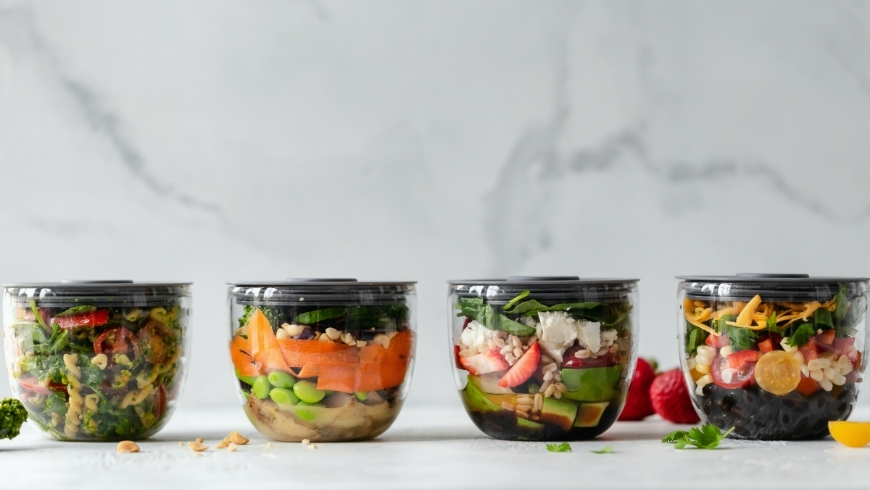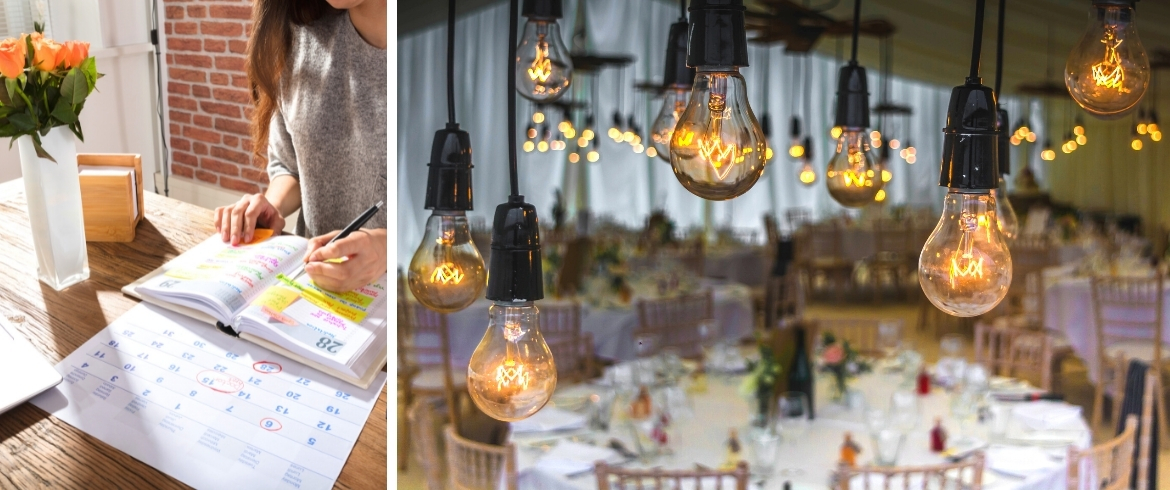What are green events? Is there a way to actually make any event a little greener? Keep reading if you want to find out the top 5 tips to organise a sustainable event and make it an actual vehicle for spreading sustainability.

What are green events?
Green events are those events whose organisation follows one or more principles of sustainability. Since any human activity impacts the environment and local communities to some extent, eco-friendly events are a great way to minimise these negative impacts and maximise the positive ones.
From friend gatherings, parties, to official congresses and exhibitions, and even events in hotels or weddings, there are some strategies you can adopt to make your event more sustainable.
And this actually refers not only to the event itself but to all those processes of pre and post events activities, such as planning and dismantling, which must be carried out keeping in mind sustainability standards.
But it is also true that any event should be green to some extent, and strive to follow at least some of these criteria.
Green events typically encourage respect and protection for the environment, the reduction of consumption and waste emission, and the adoption of eco-friendly organisational approaches.
Let’s find out which are the top 5 tips to host a green event!
1. Choose Sustainable Materials and Resources

Any material or resource for your green event should either be rented, reused, or recyclable. This means that tables, chairs, decors or any other kind of equipment must never be used for one event only. And if you really need to buy something, go for PVC-free or other sustainable materials.
Also, avoid paper waste. Make sure you print out materials only when strictly necessary and in a very targeted way. Always prioritise digital communication (such as email, websites and social media) and use the digital version of any document or ticket your guests may need.

If you really need to print out some stuff, use materials such as recycled paper. In this way you will contribute to waste reduction, promoting reused materials at the same time.
Are you offering your guests some gadgets? Remember to always question the environmental impact of what you are providing. You may choose to replace sponsored objects with free of charge services and activities, resulting in a lower environmental impact.
2. Choose Green mobility and an Eco-friendly Venue
The venue of an event is actually key in making the whole event sustainable. And this comprises the location itself, and how to reach it.

Green mobility is key. A green event location is usually easily reachable on foot, by public transport or by bike. Provide your guests with all the necessary information about bus schedules, cycling routes and bike/electric rollers renting. This actually encourages participants to use greener means for getting around.
Also, stop providing such services as free parking! In doing so, you will further discourage people to use their car. Instead, offer discounts and special prices to those guests who reach the venue by using eco-friendlier means of transport.
The venue itself should be energy-saving, and the energy need should be guaranteed by renewable energy sources. A great idea would be choosing a venue located near a waterway. In this way, you could both use alternative energy sources to generate electricity from lake water or river water, but also enhance the typical traits of the destination at the same time.

If you are organising an exhibition or art show, make sure to install motion-detector lights – so that lights switch on only when strictly necessary. In addition, make sure heating and cooling are eco-sustainable: this means that at night the heating is lowered and in summer the temperature is never too low as compared to the external one.
3. Catering and Food: Two Key Elements for your Green Events
The food itself and catering activities are some other key elements when considering how sustainable is an event. For example, to avoid any waste, necessary crockery and cutlery should be reusable or recyclable. Also, avoid single portions, and provide bulk drinks containers and jugs instead.
The choice of menu is also very important: ingredients and products should be locally sourced, to not only avoid the higher carbon footprint of imported materials but also to help local communities. So how to choose the right food? Go for biologic, 0km, seasonal or fair trade products.
In addition, catering services should be carefully planned according to the right amount of persons participating in the event.

Joining waste management initiatives is another step to take. If you are planning an event with your friends, make sure you have enough containers to give leftovers to them when the party is over. Otherwise, if you are organizing a more official event, and with more people, contact associations or carry out initiatives yourself, to donate the leftovers to charity organisations on the very day.
4. Choose an Eco-sustainable Approach for Waste Management
If you follow a sustainable approach, the waste produced before, during and after your event will be minimal. But it is still essential to manage them in the best way possible, at the very moment when they are produced.

Plan waste management actions. For example, a separate collection is key. Paper, glass or plastic bins should not only be available but also properly highlighted to any possible participant. Make rules clear to everyone, ranging from staff to participants. You could even use colours or special symbols, to make a strong impact on anyone.
5. Green Communication: the Best Way to Promote your Green Events
Last but not least, communication should somehow promote how green an event is. For example, the event should be advertised as a sustainable event on every platform, being it online or offline. And all the sustainability measures taken should be properly underlined.

Another important aspect of green events is that in addition to being green themselves, they also promote sustainability, and raise awareness about all the environmental issues we are facing today.
In fact, spreading the culture of sustainability is key. Encourage everyone to make their own contribution: and this does not only apply to the event itself, but to everyone’s daily life.

Let your events be green! make sure you follow at least some of our 5 tips so that you will make the life of your participants a little eco-friendlier.
And remember: the perfect green events are those promoting sustainability on all fronts.
Featured image via Canva




